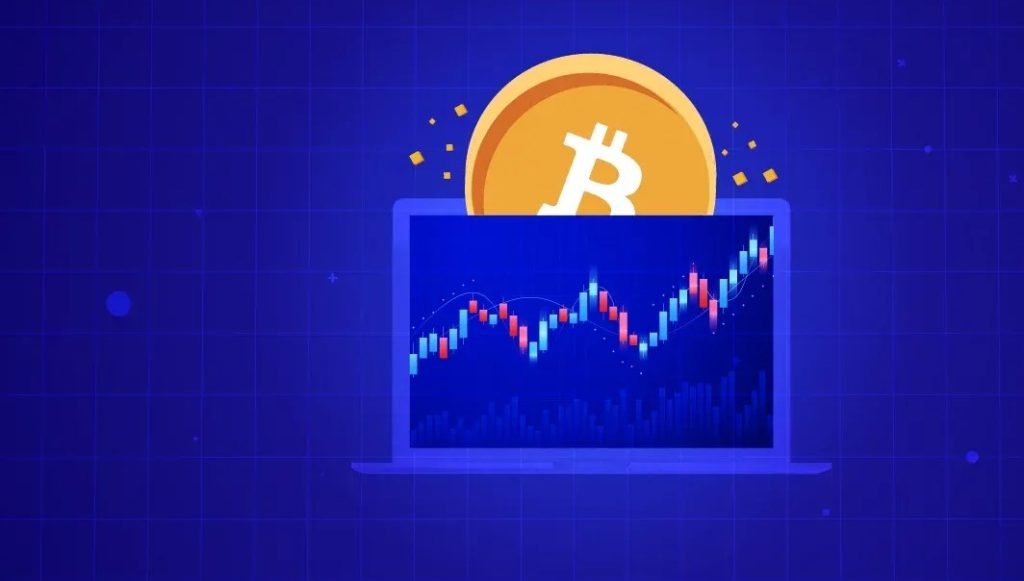How To Spot Price Trends in Cryptocurrency

Every trend and expansion in the global crypto-assets market can be linked to one or a sequence of events, including market crashes, groundbreaking hard forks, several halving cycles, and important regulatory laws.
The first step in identifying cryptocurrency price trends is to examine past price data using tools such as moving averages, RSI, and MACD indicators, which can show possible uptrends or downtrends. Track support and resistance levels to determine price stability, and keep an eye out for patterns like “head and shoulders” or “double tops” that may indicate reversals. Additionally, take into account market sentiment and trading volume.
1. What is the trend of cryptocurrency today?
Today’s cryptocurrency market has a generally mixed trend, with top assets like Bitcoin and Ethereum exhibiting some encouraging momentum despite recent volatility. If successful, Bitcoin’s attempt to breach key resistance levels could portend an impending bullish trend. Similar to this, Ethereum is stabilizing following slight advances and is seen to be impacted by network activity and growing market interest in decentralized finance (DeFi) platforms‐56†source】【57†source】.
There has been a general pattern of volatility in the market, with some cryptocurrencies exhibiting noteworthy growth and others declining.

2. What is the best crypto price tracker?
Analyzing patterns and signals that show whether a market is moving sideways, upward, or downward is part of using charts to identify trends in bitcoin values. The following charting methods and resources will assist you in successfully spotting trends:
1. CoinMarketCap
- Well-known for its comprehensive market statistics and easy-to-use interface. Along with market capitalization, volume information, and historical price charts, it lists hundreds of coins.
- Features include headlines, a watchlist that may be customized, a portfolio tracker, and basic analysis.
- Cons: Traders have limited access to sophisticated analysis tools.
- Ideal For: Novices and general market tracking.
2. CoinGecko Pros:
- Like CoinMarketCap, but with extra information like community statistics and developer activity.
- Features include headlines, customized watchlists, real-time price tracking, and comprehensive coin statistics.
- Cons: In contrast to more expensive platforms, some data might be delayed.
- Ideal For: People looking for community and developer insights, as well as those interested in all-around tracking.
3. TradingView Advantages:
- Technical analysis indicators and sophisticated charting tools. Because of its ability to provide detailed charts, it is a favorite among traders.
- Features include social features, customisable indicators, price alerts, and trading broker integration.
- Cons: Some functions require a paid subscription, and it may be too complicated for novices.
- Ideal For: Individuals who are interested in in-depth technical analysis and traders.
3. How do I read cryptocurrency charts and identify trends?
1. Understand Chart Types
- The most widely used charts in cryptocurrency trading are candlestick charts. Each candlestick displays the opening, closing, high, and low prices as well as price fluctuations over a given time period. Whether the price has increased (usually green) or decreased (usually red) is shown by the color of the candle. Determine Trend Lines
- Join successive highs or lows to create trend lines. Whereas a downward trend line joins lower highs, an ascending trend line joins higher lows. These lines aid in visualizing the market’s general direction.
2. Seek out Suppevels
- When an asset reaches support levels, it usually stops falling, and when it reaches resistance levels, it usually stops rising. Determining these levels can aid in forecasting probable price reversals. A new trend may be indicated by a breakout above resistance or below support.
3. Examine the Volume
- volume of assets exchanged at a certain time frame. While low volume during price swings may indicate a fading trend, rising price and high volume can prove the strength of a trend.
4. Monitor News and Market Sentiment
External factors like news events ory changes can influence price trends significantly. Keeping an eye on market sentiment can provide context to the price movements observed on charts .
4. Global crypto-assets Market: Events Shaping Price Trends
Numerous events have a big impact on the global crypto-assets market, shaping price movements. Announcements about regulations, such as modifications to laws or government regulations pertaining to cryptocurrencies, may cause abrupt market swings.
Significant technical developments also affect market dynamics and investor mood, such as the introduction of new blockchain initiatives or modifications to current protocols. Furthermore, macroeconomic variables that have a significant impact on cryptocurrency pricing include changes in conventional financial markets and inflation rates.
These effects are further amplified by market sentiment, which is influenced by news, social media trends, and powerful endorsements. This intricate interaction dictates the direction of cryptocurrency prices.
conclusion:
In summary, identifying price patterns in cryptocurrencies requires a blend of technical research, assessing market mood, and being cognizant of outside influences. Investors can learn about possible price moves and market directions by using tools like moving averages, RSI, and chart patterns. Understanding market dynamics is also aided by keeping an eye on trade volume and becoming current with news and regulatory changes. Combining these analytical methods with sensible risk management tactics is crucial for making well-informed trading decisions and effectively navigating the constantly shifting cryptocurrency environment because the market is quite unpredictable.
FAQs:
1. What are the current cryptocurrency price trends?
The overall direction that a cryptocurrency’s price goes over a certain time period is referred to as its price trend. Recognizing these patterns, which can be sideways (consolidation), upward (bullish), or downward (bearish), aids traders and investors in making wise choices.
2. How can I spot an upward trend?
A sequence of higher highs and higher lows on a price chart indicates an uptrend. Moving averages are frequently used by traders to validate an upward trend. They look for indicators such as the RSI to display bullish momentum and for the price to remain above a specific moving average, such as the 50-day or 200-day.
3. What role does trading volume have in identifying trends?
The quantity of cryptocurrencies being purchased and sold is indicated by the trading volume. While low trading volume may reflect a weak trend, high volume with a price increase indicates great interest and can confirm an uptrend. On the other hand, rising volume during a decline in price could indicate a negative trend.
4. How important is market sentiment for identifying trends?
Investors’ feelings and perspectives regarding a specific cryptocurrency are reflected in market sentiment. Potential trend reversals can be predicted with the use of tools such as the Fear & Greed Index, which offer insights into market mood. While negative mood might portend a decline, positive sentiment might suggest ongoing upward movement.



